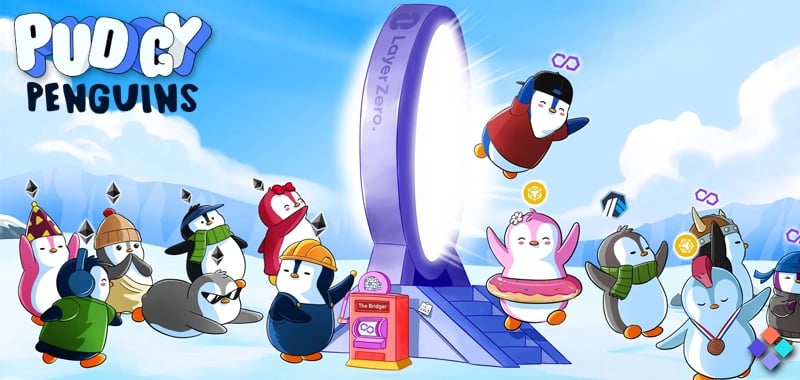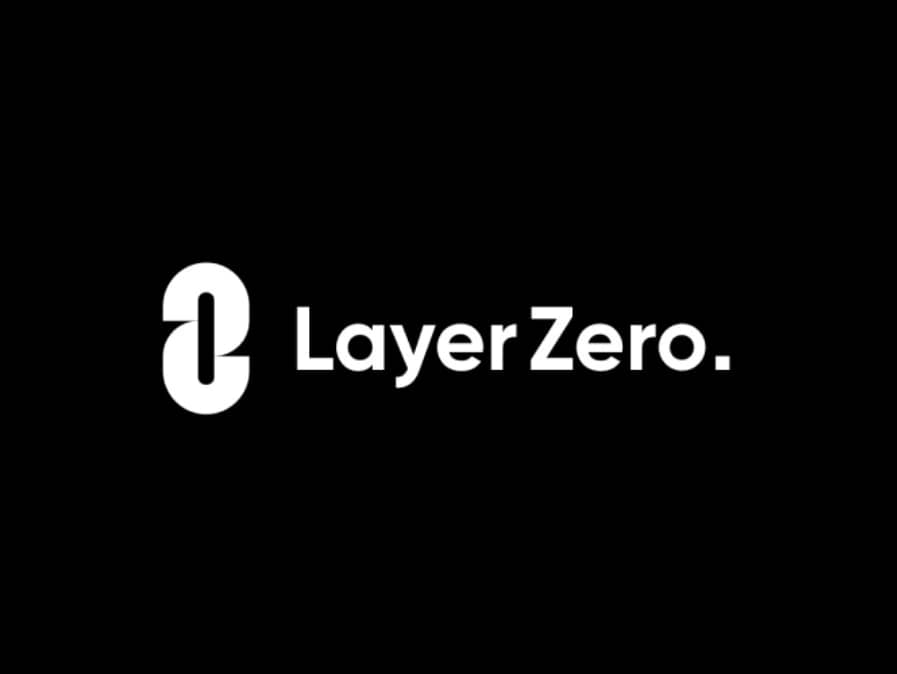위키 구독하기
Share wiki
Bookmark
LayerZero
LayerZero
LayerZero는 개발자들이 간편하고 복잡하지 않은 인터페이스를 통해 여러 블록체인에서 원활하게 작동하는 탈중앙화 애플리케이션(dApps)을 만들 수 있도록 지원하는 크로스체인 상호운용성 플랫폼입니다. LayerZero는 2021년에 Caleb Banister, Bryan Pellegrino, Ryan Zarick에 의해 설립되었으며, 캐나다 브리티시컬럼비아주 밴쿠버에 본사를 두고 있습니다. [1][2][3]
개요
LayerZero는 블록체인이 아닌 메시징 프로토콜입니다. 각 체인의 스마트 계약, 분산 검증 네트워크(DVN, Decentralized Verifier Networks), 그리고 실행자를 사용하여 블록체인 간의 원활한 상호 작용을 가능하게 합니다. 2024년 1월 29일에 구현된 LayerZero V2는 메시지 검증과 실행을 분리하여 개발자가 보안 및 실행에 대한 제어력을 높였습니다. 또한 향상된 메시지 처리량, 프로그래밍 가능성 및 기타 계약 관련 개선 사항을 제공하여 더욱 유연하고 효율적인 메시징 프로토콜이 되었습니다. [16]
업데이트에는 분산 검증 네트워크(DVN)가 포함되어 있는데, 이는 V1 오라클을 대체하며, 크로스체인 데이터 패킷을 검증할 수 있는 모든 엔티티가 LayerZero에 참여할 수 있도록 하여 분산화를 촉진합니다. Axelar 및 CCIP DVN용 어댑터는 테스트넷에서 사용 가능하며 출시 시 메인넷에서도 사용 가능할 예정이며, 2024년에는 다양한 네이티브 브리지, 타사 브리지, 중간 체인, 오라클 및 기타 검증 방법을 지원하기 위한 추가 어댑터가 계획되어 있어 벤더 종속성을 방지합니다. X of Y of N 검증 기능은 모듈식 접근 방식을 제공하여 애플리케이션이 DVN 조합을 선택하여 보안을 사용자 지정하고 특정 요구 사항에 따라 비용과 보안 수준을 최적화할 수 있도록 합니다. [16]
무허가 실행은 실행자라는 새로운 역할을 도입하여 검증과 별도로 대상 체인에서 실행을 처리하므로 가스 지불이 간소화되고 사용자 지정 가스 설정이 가능합니다. 각 애플리케이션은 DVN, 실행자, 체인 확인, MessageLibraries 및 체인 경로로 구성된 보안 스택을 구성해야 하며, 이를 통해 보안 설정을 완벽하게 제어할 수 있습니다. 지연 또는 엄격한 논스 적용 옵션을 제공하여 개발자가 순차적 또는 비순차적 트랜잭션 실행 중에서 선택할 수 있도록 함으로써 LayerZero의 처리량을 대상 체인의 처리량과 일치시키면서 검열 저항성을 유지하여 처리량이 증가합니다. [16]
향상된 프로그래밍 가능성은 개선된 프로토콜 계약 인터페이스, 경로별 라이브러리, 새로운 디자인 패턴 및 수평적 구성을 통해 가능하며, 유연성과 중단 없는 크로스체인 트랜잭션을 촉진합니다. 통합된 의미 체계는 LayerZero 엔드포인트가 있는 모든 블록체인(비-EVM 체인 포함)에서 애플리케이션이 균일하게 작동하도록 합니다. 마지막으로 V2 출시는 V1을 기반으로 구축하는 팀을 지원하는 전방 및 후방 호환성을 지원합니다. [16]
초경량 노드
초경량 노드(ULN)는 새로운 크로스체인 브리징 및 메시징 방식입니다. ULN은 온체인 라이트 노드의 보안성과 중간 체인의 비용 효율성을 결합합니다. 온체인 라이트 노드는 반대쪽 체인의 각 쌍방향 체인에 대한 모든 블록 헤더를 수신하고 검증하므로 체인 간 메시지를 전송하는 가장 안전한 방법이지만 비용이 많이 듭니다. 중간 체인은 반면, 보안성이 떨어지지만 비용 효율이 높습니다. [5]
ULN은 온체인 라이트 노드와 동일한 검증을 수행하지만, 모든 블록 헤더를 순차적으로 보관하는 대신 분산된 오라클을 통해 필요에 따라 블록 헤더를 스트리밍합니다. 이렇게 하면 노드가 모든 블록 헤더를 저장할 필요가 없어져 저장 용량 및 계산 오버헤드가 줄어들고 더욱 비용 효율적인 솔루션이 됩니다. 오라클은 정확하고 안정적인 블록 헤더를 제공하도록 인센티브를 받으므로 체인 간에 전송되는 메시지의 보안이 유지됩니다. [5]
LayerZero의 인프라
옴니체인 메시 네트워크
LayerZero는 기존 크로스체인 네트워크의 희소한 연결성과 일관되지 않은 통신 인터페이스의 한계를 해결하기 위해 지원되는 모든 블록체인에 걸쳐 균일하고 밀집된 메시 네트워크를 제공합니다. 옴니체인 메시 네트워크를 통해 어떤 체인이든 예측 가능하고 안정적인 인터페이스를 사용하여 다른 체인과 직접 통신할 수 있으므로 블록체인 간의 원활한 데이터 및 가치 전송이 가능합니다. LayerZero 프로토콜은 개별 블록체인의 다양한 보안 의미 체계 및 설계 논리에도 불구하고 모든 연결에서 일관된 보안 및 안정성을 유지합니다. [21]
네트워크는 패킷 전달에 대한 균일한 표준, 검열 없이 안정적인 데이터 전송을 보장하며, 패킷은 의도된 대상에 정확히 한 번만 전달됩니다. LayerZero의 모듈식 보안 모델은 구성 가능 및 구성 불가능한 보안 보장을 제공하여 개발자가 애플리케이션에 가장 적합한 보안 및 비용 효율성 모델을 선택할 수 있도록 합니다. 분산된 검증자 네트워크(DVN)는 메시지를 검증하며 애플리케이션에서 구성할 수 있으며, 구성 가능한 블록 확인은 소스 체인의 블록 재구성을 방지합니다. 검열, 재생 공격 및 무단 코드 변경으로부터의 보호와 같은 핵심 보안 기능은 네트워크의 불변 인터페이스에 내장되어 있습니다. [21]
네트워크는 각 경로에 다른 보안 구성이 필요할 수 있다는 점을 인식합니다. 소스 블록체인, 소스 애플리케이션, 대상 블록체인 및 대상 애플리케이션으로 정의된 경로는 각 연결의 특정 요구 사항에 맞게 보안 및 비용을 개별적으로 구성할 수 있습니다. 이러한 체인 종속적이지 않은 접근 방식을 통해 개발자는 블록체인 전체에서 원활하게 작동하는 옴니체인 애플리케이션(OApp)을 만들 수 있습니다. [21]
엔드포인트
LayerZero 엔드포인트는 변경 불가능한 스마트 계약으로, 옴니체인 애플리케이션(OApps)이 보안 구성을 관리하고 메시지를 원활하게 주고받을 수 있도록 표준화된 인터페이스를 제공합니다. LayerZero 엔드포인트는 커뮤니케이터, 밸리데이터, 네트워크 및 라이브러리의 네 가지 모듈로 구성됩니다. 커뮤니케이터, 밸리데이터 및 네트워크 모듈은 엔드포인트의 핵심 기능을 구성하는 반면, 새로운 체인은 추가 라이브러리로 추가됩니다. 이러한 설계를 통해 핵심 모듈을 수정하지 않고도 새로운 체인을 쉽게 지원할 수 있습니다. [3][4]
유틸리티
LayerZero는 개발자와 사용자에게 다양한 유틸리티를 제공하는 블록체인 인프라입니다. 주요 기능으로는 크로스체인 탈중앙화 거래소, 멀티체인 수익률 집계기 및 멀티체인 대출이 있습니다. 이러한 유틸리티를 통해 서로 다른 체인 간의 네이티브 자산을 원활하게 전송하고, 높은 수익률 기회에 접근하며, 비용 효율적인 대출 옵션을 이용할 수 있습니다. [4]
크로스체인 탈중앙화 거래소
LayerZero는 네이티브 자산만을 사용하는 크로스체인 탈중앙화 거래소(DEX)를 가능하게 합니다. 래핑된 토큰을 사용하거나 중개 사이드체인을 거치는 기존 DEX 설계와 달리, LayerZero는 양쪽 체인에 유동성 풀이 있는 DEX를 가능하게 하여 사용자가 한 체인에 네이티브 자산을 예치하고 다른 체인에서 네이티브 자산을 인출할 수 있도록 합니다. LayerZero의 메시징 기능, 직접 브리지, 자동 시장 조성, 그리고 다른 가격 책정 모델을 구현할 수 있습니다. [4]
다중 체인 수익률 집계기
LayerZero를 사용하여 크로스체인 거래를 할 때, 다중 체인 수익률 집계기는 여러 생태계의 높은 수익률 기회를 활용하여 고수익 기회에 대한 접근성을 극대화하고 사용자가 시장 비효율성을 활용할 수 있도록 할 수 있습니다. 이는 현재 생태계 외부의 수익률 기회에 대한 접근을 제한하는 단일 체인 수익률 집계기보다 개선된 것으로, 더 많은 수익률 기회를 제공합니다. [4]
다중 체인 대출
LayerZero의 다중 체인 대출을 통해 사용자는 여러 체인의 기회를 활용하면서 선호하는 체인에 자산을 통합할 수 있습니다. 대출 프로토콜을 통해 사용자는 선호하는 체인에서 자산을 대출하고 다른 체인에서 원하는 자산을 직접 빌릴 수 있으므로 브리지 및 스왑 수수료와 같은 비용이 많이 드는 중개 단계가 필요 없습니다. [4]
LayerZero 에어드랍
2024년 6월 14일, LayerZero 팀은 'LayerZero Foundation'을 발표했으며, LayerZero Labs CEO인 Bryan Pellegrino는 X에서 ZRO 토큰 에어드랍에 대한 계산 결과를 트윗으로 공개했습니다. [17]
자, 숫자에 대해 이야기해 봅시다. 총 공급량의 23.8%가 커뮤니티와 개발자에게 직접 배포됩니다. 여기에는 재단, 성장 등은 포함되지 않습니다. 커뮤니티에 직접 배포됩니다. 이 중 8.5%는 첫날 배포되며 (5% 코어, 3% RFP, 0.5% 커뮤니티 풀) 나머지 대부분은 향후 36개월 동안 추가적인 소급 배포와 함께 매 12개월마다 배포되며, 개발자를 위한 미래 지향적인 RFP도 제공될 것입니다.... - 2024년 6월 14일 트윗 [18]
트윗에 따르면, ZRO의 총 공급량은 10억 개이며, 그중 23.8%가 커뮤니티와 개발자에게 할당됩니다. 23.8%에는 재단, 성장 및 기타 항목은 제외됩니다. 커뮤니티와 개발자에게 할당된 토큰의 8.5%는 에어드랍 첫날 배포되며, 나머지는 3년 이내에 배포됩니다. 이 프로젝트는 12개월마다 추가 할당을 계획하고 있으며, 생태계 개발자를 위한 미래 지향적인 제안 요청(RFP)도 제공할 예정입니다. [19]
LayerZero Labs는 또한 6월 20일을 토큰 에어드랍 날짜로 언급하며, 사용자들에게 공식 웹사이트를 통해 자격 여부를 확인하도록 요청했습니다. [20]
파트너십
- 구글 클라우드 (Google Cloud)
- 폴리헤드라 (Polyhedra)
투자
2021년 4월 1일, LayerZero는 최초 시드 투자 라운드에서 2백만 달러를 유치했습니다. [2][10]
2021년 9월 16일, Binance Labs(바이낸스 랩스)와 Multicoin Capital이 주도한 LayerZero의 시리즈 A 투자 라운드에서 6백만 달러를 유치했습니다. 추가 투자자로는 Sino Global Capital, Defiance, Delphi Digital, Robot Ventures(로봇 벤처스), Spartan, Hypersphere Ventures, Protocol Ventures, Gen Block Capital, 그리고 Echelon Capital(에셜론 캐피탈)이 있습니다. [2][7]
2022년 3월 20일, a16z(a16z), FTX(FTX), 그리고 Sequoia가 주도한 LayerZero의 시리즈 B 투자 라운드에서 1억 3천 5백만 달러를 유치했습니다. 주요 투자자로는 Coinbase(코인베이스) Ventures, PayPal Ventures, Tiger Global, 그리고 Uniswap(유니스왑) Labs가 있습니다. [8][9]
Pudgy Penguins
2023년 1월 26일, Pudgy Penguins(퍼지 펭귄)는 수작업으로 그린 펭귄 NFT(대체불가토큰) 컬렉션 프로젝트로, LayerZero와 파트너십을 맺어 NFT(대체불가토큰)를 여러 체인 간에 전송할 수 있도록 했습니다. Pudgy Penguins(퍼지 펭귄)는 증가하는 사용자 수와 인지도를 고려하여 Polygon(폴리곤), BNB Smart Chain(BNB 스마트 체인), Arbitrum(아비트럼)과 협력하기로 결정했습니다. Polygon(폴리곤)은 Web3(웹3) 커뮤니티에 새로운 사용자를 유치할 수 있는 능력 때문에, BSC(바이낸스 스마트 체인)는 낮은 gas(가스) 수수료와 포용성에 대한 노력 때문에, 그리고 Arbitrum(아비트럼)은 DeFi(디파이) 개발에 적합하기 때문에 선택되었습니다. Pudgy Penguins(퍼지 펭귄) NFTs(대체불가토큰)를 선택한 체인으로 브리징하면 사용자는 wallet(지갑)에 연결된 기념품으로 SoulBound 토큰을 받게 됩니다. Pudgy Penguins(퍼지 펭귄)와 LayerZero 간의 이 파트너십을 통해 프로젝트는 높은 gas(가스) 수수료에 대한 걱정 없이 새로운 Web3(웹3) 사용자가 생태계에 쉽게 참여할 수 있도록 하여 "출처 및 사용자 경험"을 모두 제공합니다. [14][15]

Initia Labs
2024년 7월 10일, LayerZero와 Initia는 Cosmos의 상호운용성 표준을 개발하기 위해 파트너십을 맺었습니다. 이를 통해 Cosmos SDK 기반 체인이 LayerZero 지원 체인에 연결되어 전체 체인 상호운용성을 가능하게 합니다. [22]
팀
연구팀
- 연구 책임자: Daniel P. Ahn (다니엘 피. 안)
- 전략 책임자: Max Glassman (맥스 글래스먼)
- 인재 영입 책임자: Richard Dietrich [11]
경영진
- 공동 설립자 겸 CEO: Bryan Pellegrino
- 공동 설립자 겸 CTO: Ryan Zarick
- COO: Ari Litan [12]
이사회
- 엔젤 투자자: Rob Sadow [13]
잘못된 내용이 있나요?
